Ice rinks are among the most energy-intensive public buildings in developed and developing countries. According to a research on indoor ice rinks, a typical ice rink consumes approximately 1165 MWh/year. The refrigeration system is usually the largest consumer by 43% average share of the total energy consumption.
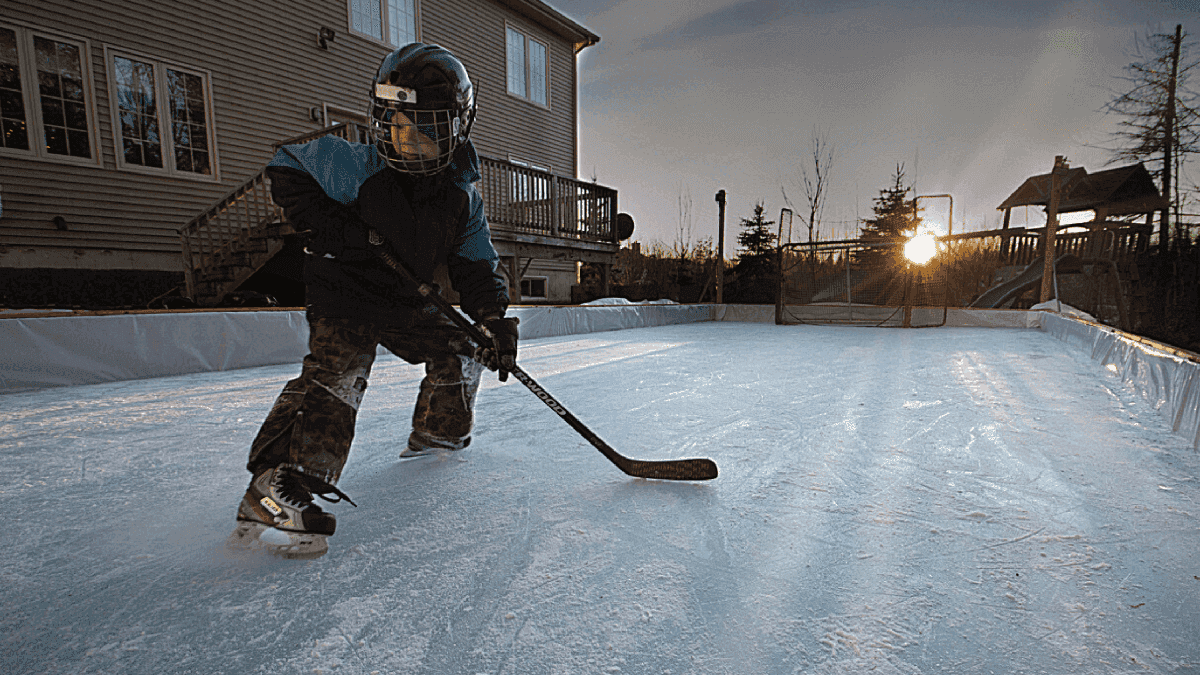
To decrease the refrigeration system energy demand, there are a variety of energy efficiency techniques known and available but the key to selecting the best ones is finding the major heat loads on the ice sheet and refrigeration system, which is unique for each ice rink.
First, let’s learn the working principle of the ice rink refrigeration system.
How Ice Rink Refrigeration Works
Ice Rink Refrigeration is not complicated. It usually contains 2 main parts, the ice rink chiller and the piping system.
It works more or less like the refrigerator and the air conditioner in your home, the main difference between ice rinks and refrigerators or air conditioners is that the refrigerant doesn’t cool the ice rink directly.
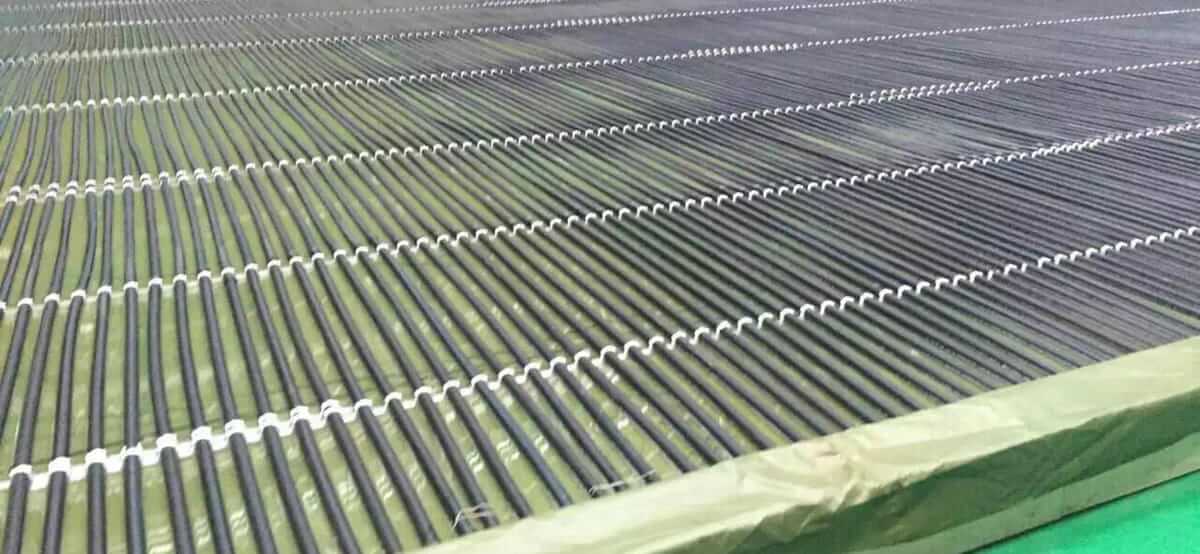
Here’s how:
- Pipes under the skating surface carry super-chilled glycol solution. The chilled pipes keep the ice chilled below freezing by transferring their cold temperature to the pipes, and then to the ice.
- At the chiller end of the ice rink refrigeration system, the refrigerant cools the glycol, which is an anti-freeze agent that is pumped through pipes underneath the ice.
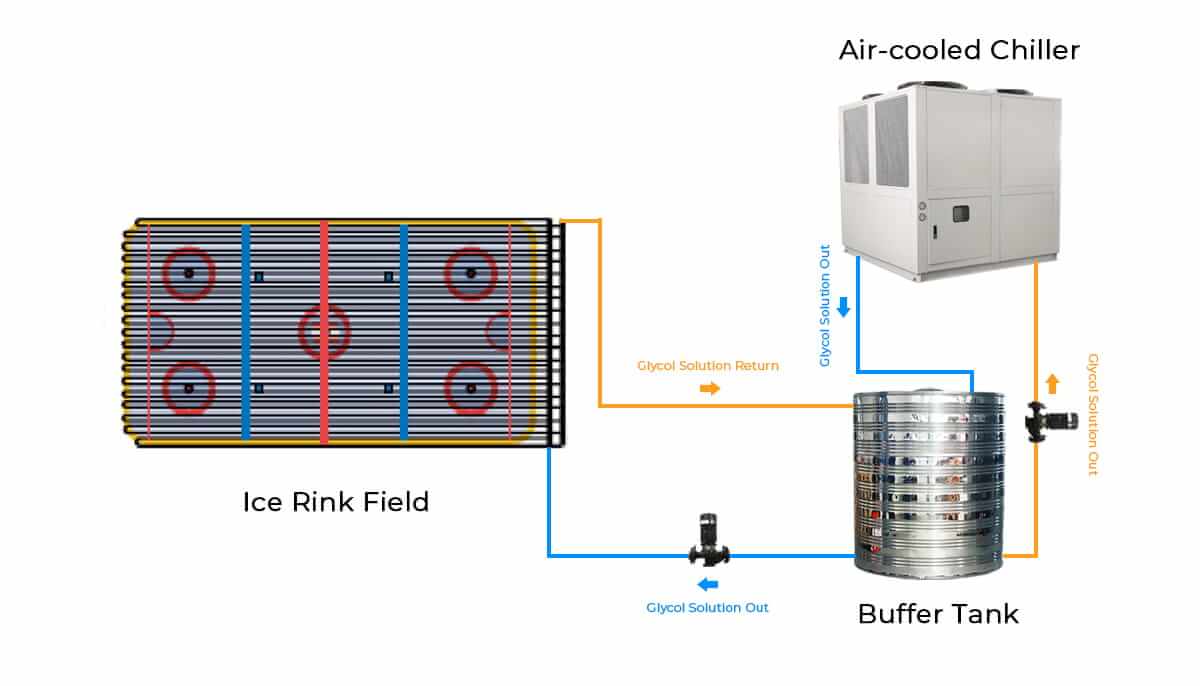
- The heat that’s absorbed by the chiller is then passed to the open air through the condenser inside the chiller(air-cooled chiller).
- A temperature sensor connected to a thermostat is embedded in the ice to control the temperature. Yet the chiller won’t run if the ice sensor reads a temperature below its threshold of operation, providing excellent ice quality and saving you money on your electric bill.
Construction of A Typical Ice Rink
There are 2 main requirements to install a refrigerated ice rink – a flat surface and electrical power.
Depending on the underlying surface, such as a sports court, a bed of sand leveling an existing slope, or even your backyard lawn if it’s sufficiently level.
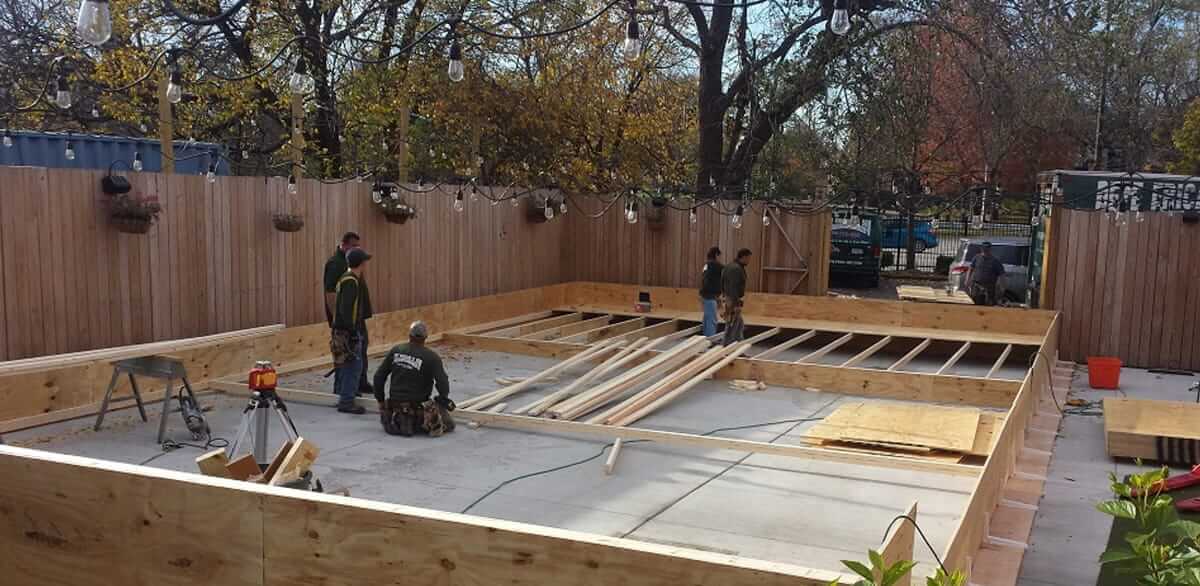
Flat Surface
- Level within 2″ across the entire rink area.
- Set up the rink boards and brackets.
- Lay down the rink lining.
- The tubing grids are 7 or 4 feet wide, with 1/2″ tubes evenly spaced. Lay down, side-by-side, as many of these grids as you need, for the length of your ice rink.
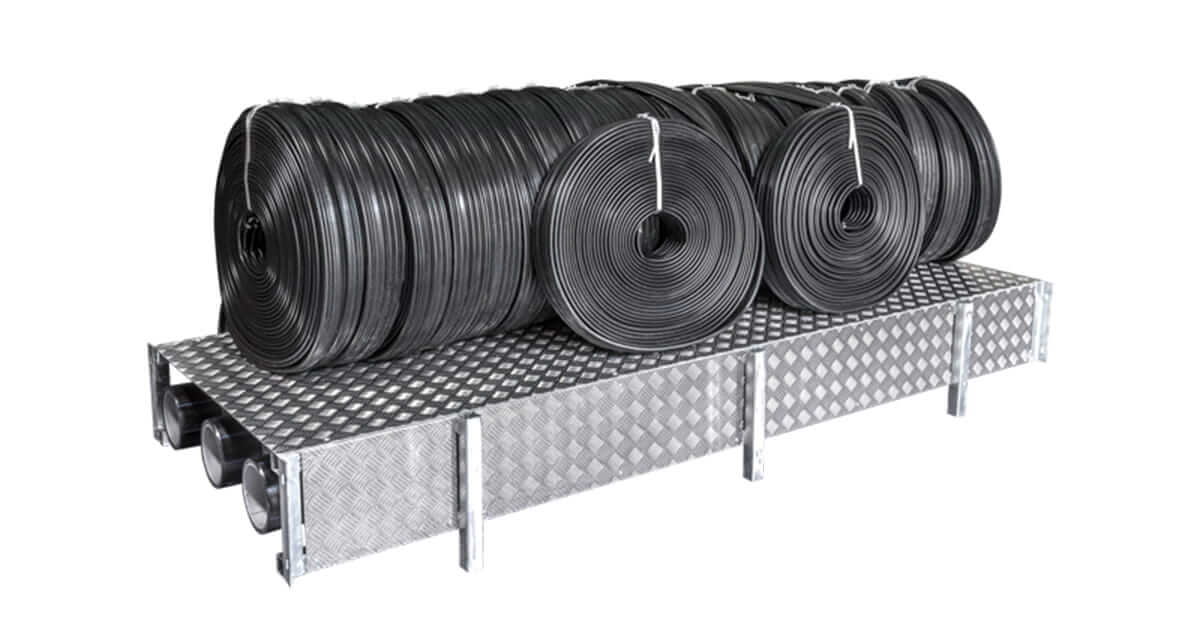
- Attach the heads of the grids to the header pipe.
- Connect the header to the ice rink chiller with flexible piping.
- The chiller can be up to 20 feet from the rink however should be level, and on the same level as the ice surface.
- Charge the system with the refrigerant that is provided – either glycol or salt water.
- Cover the tubing grids with water.
- Once you’ve connected the chiller, you can turn it on as soon as the water has frozen (for the most efficient operation). You’ll still want to add a few more layers of ice until you have a minimum of 3 inches (8 cm) at the highest area.
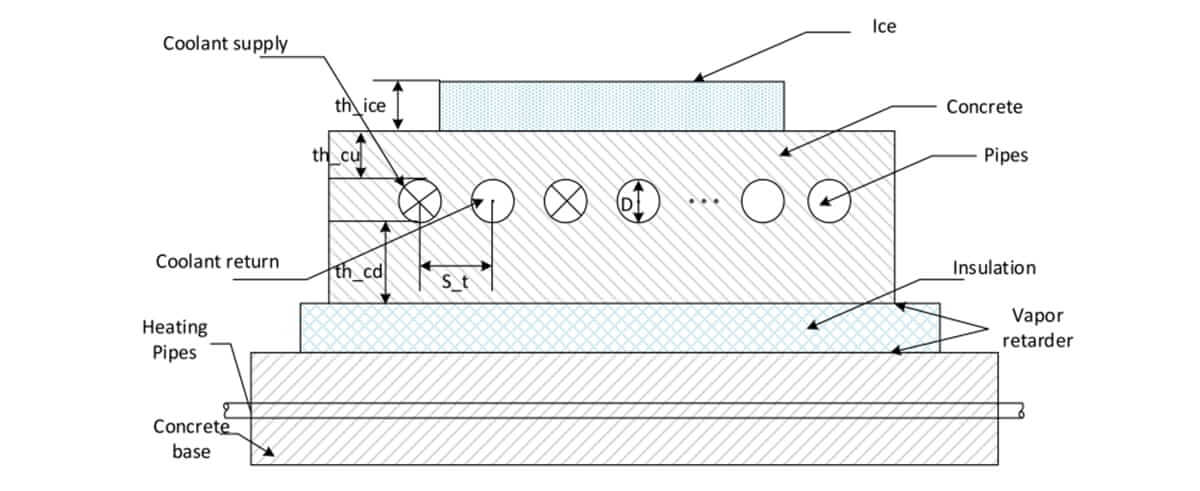
Electrical Power
Having the correct electrical connections are necessary to power the chiller. For reference, a 20′ x 40′ refrigerated ice rink will require a minimum of 60 amps at 220-240V single phase. This is the same type of power used for residential AC or residential ovens. Larger rinks will require more current. We can assist in helping determine the power requirement for your ice rink. For commercial applications, 3 phases at 480 volts will greatly reduce your amperage demand for wiring.
The rinks can be embedded in concrete (non-portable). However, many backyard ice rink refrigeration systems are completely portable. At the end of the winter season, everything is easily disconnected and stored.
Thanks to the chiller, your ice rink can stay icy for up to 6 months of the year. Some chillers will maintain the rink ice in climates with temperatures up to 55 – 60 degrees Fahrenheit (12 – 15 degrees Celsius).
How to Choose An Ice Rink Chiller?
The energy load mainly depends on the ice rink’s purpose, size, latitude, and topography. From the analysis of the cooling load per unit area of the ice rinks that have been built in the northern country. For a typical ice rink, the cooling capacity should be around 300-350kW.
Here are the full steps of calculating the energy load of an ice rink.
- First, we will determine the refrigeration load required to cool down the waters from the ambient temperature to zero degrees centigrade.
- Then, we will calculate the latent heat required to freeze the water to ice.
- After that, we will calculate the refrigeration load require to cool down the ice further to the desired temperature (say -4 degree centigrade).
- Next, we will calculate the refrigeration load reducing the cooling of the ice by means of conduction and convection by the ice and surrounding air.
If you find the above method too complicated to understand, please check the below general cooling capacity range for different conditions:
- The indoor ice skating rink is about 163~233w/m2.
- The outdoor ice skating rink is about 488~512w/m2.
Also here is the recommended cooling capacity table from ASHRAE-1994.
| Required cooling capacity of the ice rink (ASHRAE-1994) | |||
| Indoor skating rink open all year round (air-conditioned) | Required cooling capacity (kw/m²) | Ice skating rink for 4~5 months of the year (above latitude 37°) | Required cooling capacity (kw/m²) |
| Competition skating rink | 0.33-0.25 | Outdoor ice rink, uncovered | 0.50-0.43 |
| Competition skating rink (it takes a short time to freeze) | 1.0-0.33 | Outdoor ice rink, uncovered | 0.33-0.20 |
| Skating Entertainment Center | 0.33-0.20 | Outdoor ice rink without air conditioning | 0.20-0.13 |
| Figure Skating Club | 0.33-0.20 | Outdoor ice rink with air conditioning | 0.25-0.11 |
| Skating rink | 0.25-0.17 | Indoor ice skating rink | 0.20-0.10 |
| Ice Pavilion | 0.50-0.33 | ||
Commercial Considerations
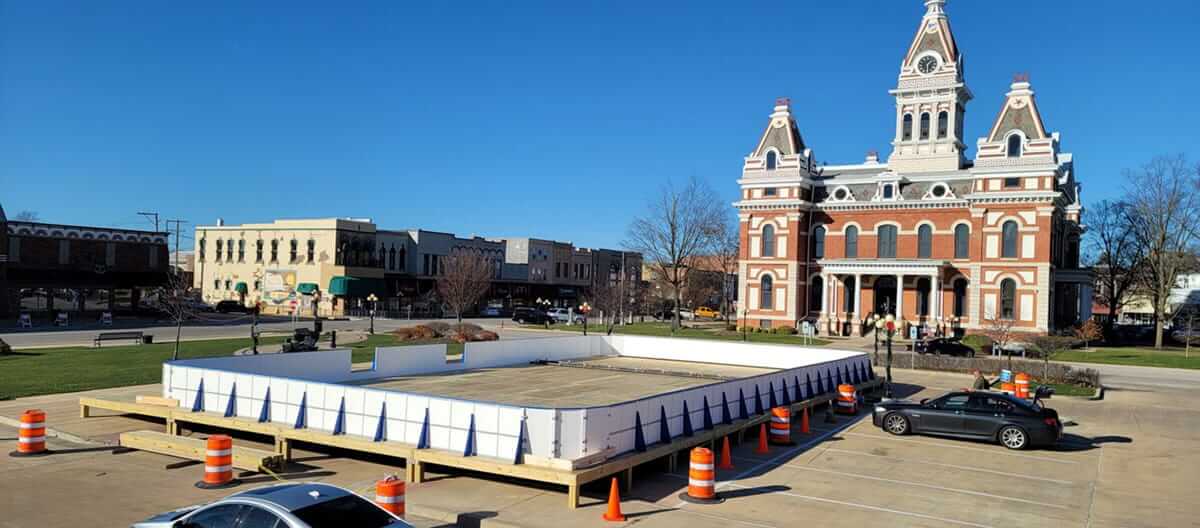
If your intention is to use an ice rink to generate a profit, a refrigerated ice rink is the best route. Bitter cold days are not enjoyable for customers, but days, where the temperature is between 25-50F, are magnificent for generating income.
We have worked with restaurants, bars, park districts, and special events projects to have ice on demand. Curling lanes are a great wintertime activity for bars and restaurants! Whether you are looking for a quality refrigerated rink for your backyard, need a refrigerated rink for a private event, or are a commercial client looking for a new winter attraction for your business, SCY has you covered.

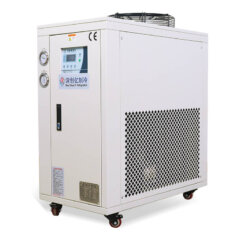
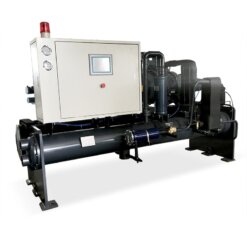
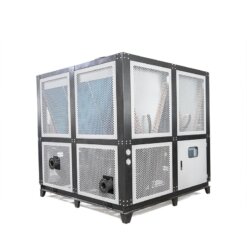
Boa Tarde,
Gostaria de montar uma pista de patinação no gelo, com aproximadamente 250m².
Qual a necessidade em tonelagem de refrigeração, potencia e consumo hora após o congelamento da pista.
Temperatura media anual = 24 graus